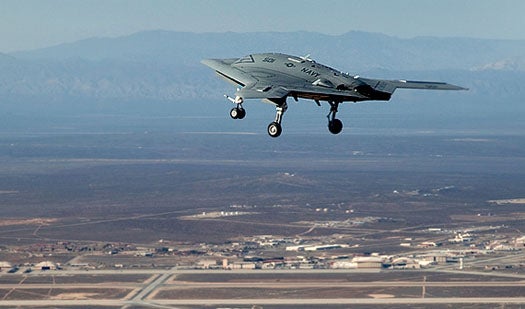The Navy’s X-47B Will Be So Autonomous, You Can Steer It With Mouse Clicks
To fly the military’s baddest, most technologically advanced planes, you once had to have what Tom Wolfe called “that righteous...

To fly the military’s baddest, most technologically advanced planes, you once had to have what Tom Wolfe called “that righteous stuff,” the willingness to strap yourself to a jet-fuel laden machine and push it to the very limits of its mechanical capabilities. Nowadays, unmanned systems have taken the human danger out of some combat missions, though human pilots remain at the sticks.
But not for long.
The Navy’s experimental X-47B combat system won’t be remotely piloted, but almost completely autonomous. Human involvement won’t be of the stick-and-rudder variety, but handled with simple mouse clicks.
Speaking to reporters at the Sea Air Space convention near Washington, reps from both Northrop Grumman (maker of the X-47B) and the Navy said the X-47B would be piloted not by human handlers in some steel box in Nevada, but by 3.4 million lines of software code. The rest of its functions will be able to be handled by non-pilot personnel (or your average child), as they will only require clicks of the mouse; a click to turn on the engines, a click to taxi, a click to initiate takeoff, etc.
For flyboys proudly boasting their nighttime carrier landing cred, the idea is anathema. But given the difficulty and danger of carrier takeoffs and landings, automating them is one way to ensure safety–provided the systems work the way they are supposed to. The X-47B has already taken to the skies from Edwards AFB earlier this year, but this is a Navy plane. As such, it will begin “learning” the ins and outs of carrier operations via simulated takeoffs and landings starting in 2013.
If all goes well, the X-47B could be autonomously showing Navy pilots how to put a multimillion aircraft down on a sea-tossed carrier deck by 2014. Those carrier landings, of course, take a certain kind of touch. Specifically, that of an index finger on a standard issue mouse.
[Danger Room via IEEE Spectrum]